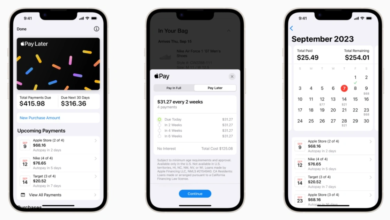The Ultimate Application Security Checklist for 2023: Protect Your Digital Assets

In the fast-evolving digital landscape of 2023, ensuring the security of your applications has never been more crucial. Cyber threats continue to advance in complexity and scale, putting your valuable digital assets at risk. To safeguard your data and reputation, you need a comprehensive application security checklist. In this article, we will guide you through the essentials of application security in 2023, helping you protect your digital assets effectively.
The Importance of Application Security
In today’s rapidly evolving digital landscape, the significance of application security cannot be overstated. As businesses and individuals become increasingly reliant on software applications for various purposes, the need to safeguard these applications from cyber threats and vulnerabilities becomes paramount. In this article, we will delve into the crucial aspects of application security, emphasizing why it is of utmost importance in the modern world.
Protection of Sensitive Data
One of the primary reasons why application security is essential is the protection of sensitive data. Applications often handle confidential information such as personal details, financial records, and intellectual property. Failure to secure this data can result in severe consequences, including data breaches, identity theft, and financial losses.
Preserving User Trust
Trust is a cornerstone of any successful business or online service. When users trust an application to keep their data safe, they are more likely to engage with it. However, a single security breach can shatter that trust irreparably, causing users to abandon the application and seek alternatives. Therefore, investing in robust security measures helps maintain user confidence and loyalty.
Read More: Why Mobile App Testing is Important for Application Development
Mitigating Financial Losses
The financial implications of a security breach can be staggering. Beyond potential fines and legal costs, businesses can suffer substantial revenue losses due to downtime, remediation efforts, and damage to their reputation. Application security acts as a preventive measure, significantly reducing the risk of financial losses associated with cyberattacks.
Meeting Regulatory Requirements
Governments and regulatory bodies worldwide are tightening their grip on data privacy and security. Non-compliance with these regulations can result in substantial penalties. Ensuring your applications adhere to these requirements is not just a legal obligation but also a way to avoid legal troubles and maintain the trust of your customers.
Protection Against Evolving Threats
Cyber threats are continuously evolving, becoming more sophisticated and targeted. Without a proactive approach to security, applications become vulnerable to a wide range of attacks, including malware, ransomware, and phishing. Regularly updating and fortifying security measures is crucial to staying ahead of these threats.
Safeguarding Reputational Capital
A good reputation is challenging to build but easy to destroy. News of a security breach can spread rapidly, tarnishing an organization’s image and credibility. Investing in application security not only protects your digital assets but also safeguards your hard-earned reputational capital.
Ensuring Business Continuity
Security incidents can disrupt business operations, leading to downtime, loss of productivity, and customer frustration. Application security measures help ensure business continuity by minimizing the impact of potential security breaches and enabling a swift response to mitigate damages.
Supporting Future Growth
As your business or organization grows, so does the complexity of your application landscape. A strong security foundation ensures that as you expand, you can do so confidently, knowing your applications are protected against a wider array of threats.
Understanding Modern Cyber Threats
As technology advances, so do the threats. Cybercriminals are becoming more sophisticated, utilizing techniques like social engineering, malware, and zero-day exploits. Understanding these threats is the first step towards defending against them.
Key Elements of an Effective Application Security Strategy
Secure Coding Practices
Developers play a pivotal role in application security. Ensuring they follow secure coding practices is essential in preventing vulnerabilities.
Regular Vulnerability Assessments
Continuous testing and vulnerability assessments help identify weaknesses before attackers can exploit them.
Robust Access Control
Limiting access to sensitive data and functionalities is crucial. Implement strict access controls to keep unauthorized users at bay.
Encryption and Data Protection
Data breaches can be catastrophic. Encrypting data both at rest and in transit is non-negotiable.
Implementing a Security-First Mindset
Security should be ingrained in every aspect of your organization. Adopt a security-first mindset to create a culture that values and prioritizes security.
Security Automation and AI: The Future of Application Protection
Leveraging automation and artificial intelligence can help you stay one step ahead of cyber threats by identifying patterns and anomalies in real-time.
Best Practices for Incident Response and Recovery
No system is infallible. Be prepared with a well-defined incident response plan to minimize damage in case of a breach.
Building a Skilled Security Team
Your security is only as strong as your team. Invest in training and hiring experts who can defend your applications effectively.
Staying Compliant with Regulations
Data privacy regulations are becoming stricter. Ensure your security practices align with legal requirements to avoid hefty fines.
User Education and Awareness
Your employees and users are the first line of defense. Educate them on security best practices to prevent social engineering attacks.
Third-party Integration Security
Third-party integrations c
Application Security Checklist: In today’s interconnected digital world, third-party integrations have become a common practice for businesses and organizations. These integrations provide access to a wide range of services, from payment gateways and social media platforms to cloud-based applications. While third-party integrations offer convenience and expanded functionality, they also introduce security risks that must be carefully managed. In this article, we’ll explore the importance of third-party integration security and best practices to ensure your digital ecosystem remains protected.
Understanding Third-party Integrations
Third-party integrations involve the inclusion of external software or services within your application or system. These integrations can be beneficial for streamlining processes, enhancing user experiences, and expanding the functionality of your offerings. However, they also introduce potential vulnerabilities that can be exploited by malicious actors.
The Risks of Poor Integration Security
- Data Breaches: Insecure third-party integrations can lead to data breaches. If a third-party service is compromised, the sensitive data it handles or accesses, such as user credentials or personal information, can be exposed.
- Malware and Malicious Code: Unsecured integrations may introduce malware or malicious code into your application, compromising the integrity of your system and putting your users at risk.
- Unauthorized Access: Weak integration security can allow unauthorized access to your system or application, potentially leading to data theft, unauthorized modifications, or service disruptions.
Best Practices for Third-party Integration Security
- Thorough Vendor Assessment: Before integrating any third-party service, conduct a comprehensive assessment of the vendor’s security practices. Ensure they follow industry-standard security protocols and have a track record of keeping their services secure.
- Secure Authentication: Implement strong authentication mechanisms for third-party services. Use robust authentication methods like OAuth or API keys, and regularly rotate access credentials.
- Data Encryption: Ensure that data transmitted between your application and the third-party service is encrypted using secure protocols (e.g., HTTPS). Data at rest should also be encrypted.
- Regular Monitoring: Continuously monitor the security of integrated services. Implement automated monitoring systems that can detect anomalies and potential security breaches.
- Least Privilege Principle: Grant the minimum necessary permissions to third-party integrations. Only provide access to the data and functionality required for the integration to function correctly.
- Frequent Updates: Keep third-party integrations up to date by applying patches and updates promptly. Outdated integrations may contain known vulnerabilities.
- Security Testing: Regularly test the security of your integrations through vulnerability assessments and penetration testing. Identify and address security flaws promptly.
- Incident Response Plan: Develop a robust incident response plan that includes procedures for handling security incidents related to third-party integrations. Be prepared to take swift action in case of a breach.
- Contractual Agreements: Establish clear security expectations in contractual agreements with third-party vendors. Define roles and responsibilities for security maintenance and incident reporting.
an introduce vulnerabilities. Vet your partners and ensure their security measures align with yours.
Cloud Security Considerations
Application Security Checklist: Migrating to the cloud? Understand the unique security challenges and how to address them effectively.
Testing and Continuous Improvement
Security is an ongoing process. Regularly test and improve your security measures to adapt to evolving threats.
Budgeting for Security
Application Security Checklist: Investing in security is an investment in your future. Allocate the necessary budget to protect your digital assets.
Read More: How to Get Started in Computing: A Step-by-Step Guide
Conclusion
In an era where digital ecosystems thrive on collaboration and interconnectivity, third-party integrations offer a gateway to enhanced functionalities and broader service offerings. However, they also present a critical challenge – security. The risks associated with integrating third-party services into your applications or systems cannot be underestimated.
To navigate this landscape securely, businesses must adopt a proactive stance towards third-party integration security. Understanding the potential risks, diligently vetting third-party vendors, implementing robust security measures, and maintaining a constant vigil over integrated services are fundamental steps.
Moreover, vigilance shouldn’t end with the integration process. Regular monitoring, timely updates, and rigorous security testing ensure that the integration remains secure throughout its lifecycle. Adhering to the principle of least privilege and establishing clear contractual agreements are additional layers of protection.
FAQs
Q1: Is application security only relevant to large enterprises?
No, application security is essential for businesses of all sizes. Cyber threats do not discriminate.
Q2: How often should I conduct vulnerability assessments?
Regular vulnerability assessments should be performed at least quarterly, or whenever there are significant changes to your applications.
Q3: Can AI completely replace human involvement in application security?
While AI is a powerful tool, human expertise is still crucial for decision-making and adapting to new threats.
Q4: What are the consequences of non-compliance with data privacy regulations? Non-compliance can result in severe fines and damage to your reputation.
Q5: How can I ensure my security measures keep up with evolving threats?
Stay informed about the latest threats and invest in ongoing training and technology updates.











